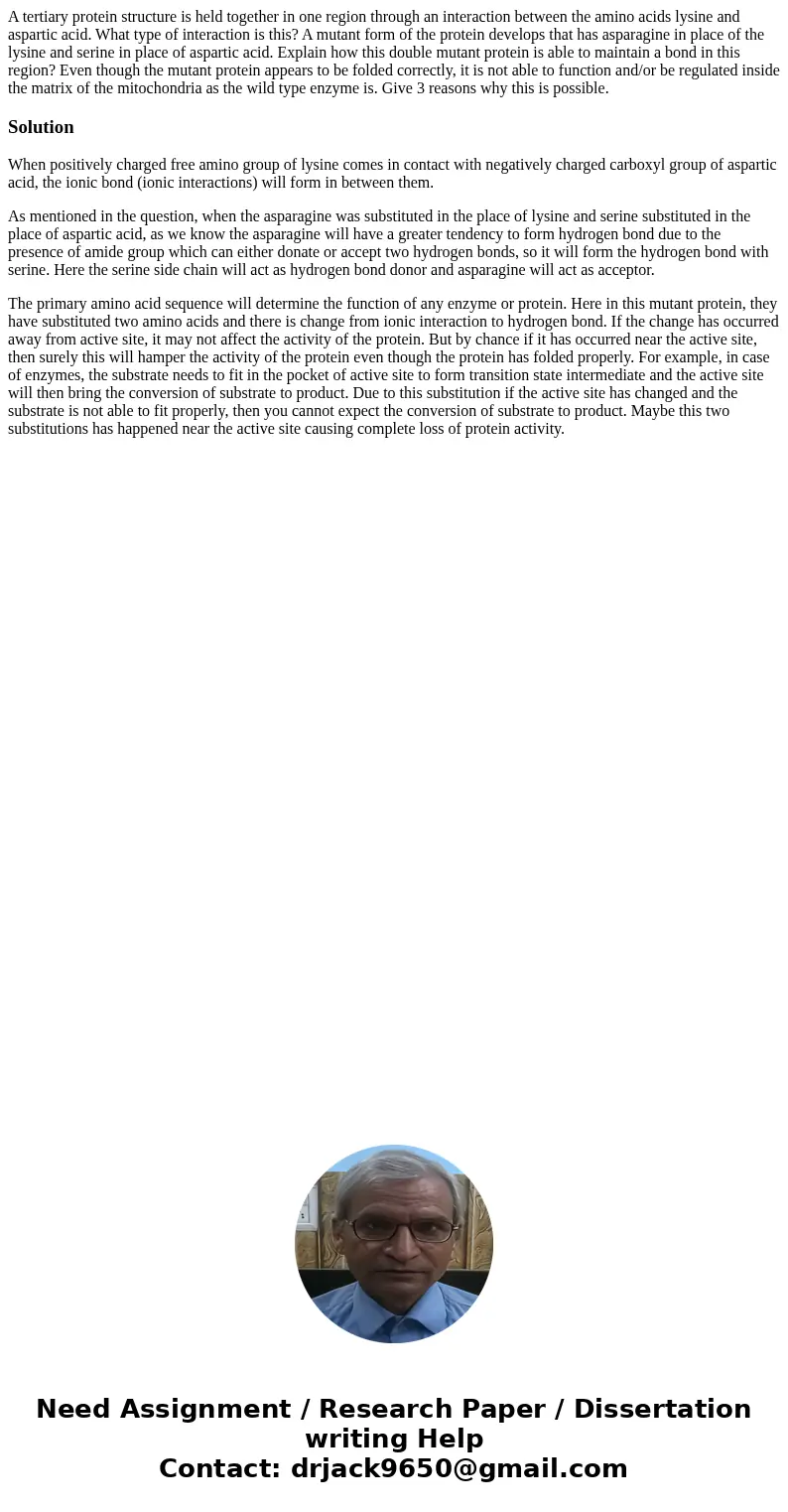A tertiary protein structure is held together in one region
Solution
When positively charged free amino group of lysine comes in contact with negatively charged carboxyl group of aspartic acid, the ionic bond (ionic interactions) will form in between them.
As mentioned in the question, when the asparagine was substituted in the place of lysine and serine substituted in the place of aspartic acid, as we know the asparagine will have a greater tendency to form hydrogen bond due to the presence of amide group which can either donate or accept two hydrogen bonds, so it will form the hydrogen bond with serine. Here the serine side chain will act as hydrogen bond donor and asparagine will act as acceptor.
The primary amino acid sequence will determine the function of any enzyme or protein. Here in this mutant protein, they have substituted two amino acids and there is change from ionic interaction to hydrogen bond. If the change has occurred away from active site, it may not affect the activity of the protein. But by chance if it has occurred near the active site, then surely this will hamper the activity of the protein even though the protein has folded properly. For example, in case of enzymes, the substrate needs to fit in the pocket of active site to form transition state intermediate and the active site will then bring the conversion of substrate to product. Due to this substitution if the active site has changed and the substrate is not able to fit properly, then you cannot expect the conversion of substrate to product. Maybe this two substitutions has happened near the active site causing complete loss of protein activity.

 Homework Sourse
Homework Sourse